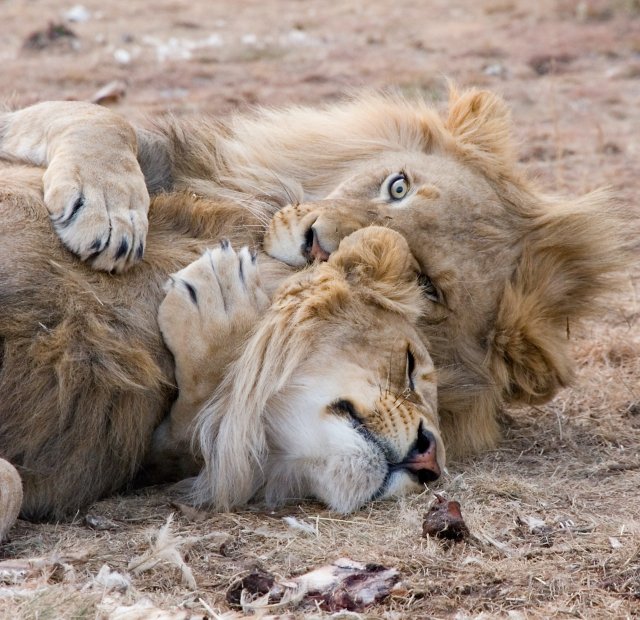What Are the Main Threats Facing Lions Today?
Threats Facing Lions
Threats Facing Lions: Lions, often referred to as the “king of the jungle,” are majestic creatures that have captivated humans for centuries. However, these iconic animals are facing numerous threats that are pushing them towards the brink of extinction. In this article, we will explore the main threats facing lions today and delve into the reasons behind their decline.
Habitat Loss and Fragmentation
One of the primary threats to lion populations is habitat loss and fragmentation. As human populations continue to grow, the demand for land and resources increases, leading to the destruction of lion habitats. Forests are cleared for agriculture, urbanization encroaches on natural areas, and infrastructure development fragments once contiguous lion territories.
Example: In Africa, the conversion of land for agriculture and livestock grazing has resulted in a significant reduction in lion populations. According to a study published in the journal Nature, lion populations have declined by 43% in just two decades due to habitat loss.
Poaching and Illegal Wildlife Trade
Poaching and the illegal wildlife trade pose a grave threat to lions. Their body parts, such as bones, skins, and teeth, are highly sought after for traditional medicine, trophies, and decorative items. Additionally, there is a demand for live lions in the exotic pet trade and for use in circuses and other forms of entertainment.
Example: In 2019, South African authorities intercepted a shipment of lion bones destined for Southeast Asia. The shipment contained over 700 lion bones, highlighting the scale of the illegal trade and its impact on lion populations.
Human-Wildlife Conflict
As human populations expand and encroach upon lion territories, conflicts between humans and lions become more frequent. Lions may prey on livestock, leading to retaliatory killings by farmers. This conflict not only results in the loss of lions but also creates negative attitudes towards these magnificent creatures.
Example: In Kenya, the Maasai people have a long history of coexisting with lions. However, as their traditional lands are increasingly converted for agriculture and settlements, conflicts between lions and Maasai herders have escalated. This has led to retaliatory killings and a decline in lion populations in the region.
Climate Change
Climate change is another significant threat to lion populations. Rising temperatures, changing rainfall patterns, and increased frequency of extreme weather events can disrupt the delicate balance of ecosystems, affecting both lion prey and their habitats. This can lead to food scarcity and further exacerbate the challenges lions face.
Example: In the Gir Forest of India, home to the last remaining Asiatic lions, climate change has resulted in a decline in the availability of natural prey species. As a result, lions have started preying on livestock, leading to conflicts with local communities.
Poor Governance and Weak Law Enforcement
Poor governance and weak law enforcement exacerbate the threats facing lions. In many countries, corruption, lack of resources, and inadequate legislation hinder efforts to protect lions and combat illegal activities such as poaching and habitat destruction.
Example: In some African countries, weak law enforcement has allowed the illegal trade in lion bones to flourish. Despite international bans on the trade, loopholes and lax enforcement have enabled the continued exploitation of lions.
Conservation Efforts and Solutions
While the threats facing lions are significant, there are ongoing efforts to conserve and protect these magnificent creatures.
- Protected Areas: Establishing and effectively managing protected areas is crucial for safeguarding lion habitats and populations. These areas provide a safe haven for lions and other wildlife.
- Community Involvement: Engaging local communities in conservation efforts is essential. By providing alternative livelihoods and education, communities can become stewards of lion conservation.
- Anti-Poaching Measures: Strengthening anti-poaching efforts and improving law enforcement are vital for combating the illegal wildlife trade and protecting lions from poachers.
- Policy and Legislation: Governments need to enact and enforce strong legislation to protect lions and their habitats. International cooperation is also crucial to address the transnational nature of the threats facing lions.
Conclusion
Threats Facing Lions : Lions are facing a multitude of threats that are pushing them towards extinction. Habitat loss, poaching, human-wildlife conflict, climate change, and weak governance all contribute to the decline of lion populations. However, through concerted conservation efforts, there is hope for the survival of these magnificent creatures. By protecting their habitats, engaging local communities, strengthening law enforcement, and enacting robust policies, we can ensure a future where lions continue to roam the wild and inspire awe and admiration.
Read More About Lions From Wikipedia




